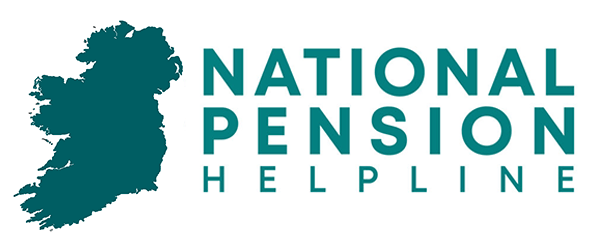Auto-enrolment is a new retirement savings scheme into which people will automatically be enrolled once they meet certain requirements. It was expected to come into effect in September 2025, however it has been delayed until 1st January 2026.
The delay allows more time for smaller payroll providers to get their systems ready for the launch, and additional time for employers, particularly small and micro businesses to ensure they are compliant with the legislation from the beginning.
Minister of Social Protection Dara Calleary has said that the scheme will “transform how people save for their retirement” – as two thirds of private sector employees currently rely on the state pension.
But how transformative will auto-enrolment be in reality, and could it have any drawbacks?
The UK introduced its auto-enrolment scheme back in 2012, providing a great case study to examine before it comes into effect here in Ireland at the start of 2026.
Auto-enrolment – UK Case Study
Auto-enrolment was introduced by the UK government in October 2012, being hailed as a panacea, with millions of employees being covered by an occupational pension on top of their state pension for the first time.
It has largely been a success to date with high levels of participation, however, it hasn’t been without its critics. Criticism is largely based around the fact that employers are paying less into their employees pension schemes than before, with a sharp downward trend in contributions in recent years.
The past three years alone have seen company pension contributions fall by 30% in the UK – with high costs being cited as a factor. A government report in 2022 also revealed that the number of employees who are opting out of the scheme had risen slightly since 2020, despite continued high levels of participation.
Auto-enrolment in the UK vs Ireland
Before we look at the successes and failures of auto-enrolment in the UK, it is necessary to understand how the scheme works there, how much employees have to pay, and the ways in which it differs from Ireland’s ‘My Future Fund’.
Employees in the UK aged over 22 and under the State Pension age are enrolled in the scheme if they are not already in a qualifying pension scheme. In Ireland, those not and earn more than £10,000 a year. They must also work or usually work in the UK.
The minimum contribution in the UK is 8%, with employees paying 5% and employers contributing 3%. 1% is returned in tax-relief from the government, meaning employees technically contribute 4% of their salary.
In Ireland, it will function in a similar way but with some key differences.
All employees in Ireland not already enrolled in an occupational pension scheme, aged between 23 and 60 are included, as opposed to between 22 and pension age in Britain. They must earn over €20,000 per year – significantly higher than in the UK. However those aged under 23 or over 60, or earn less than €20,000 per year can also opt-in if they wish.
Contribution rates will be phased in over 10 years from 1st January 2026, reaching a total of 14% in year 10.
Differences between auto-enrolment in Ireland and the UK
The key mistake you could make when leaving your employer is failing to seek advice in order to make informed decisions.
While becoming a deferred member of your employer’s pension scheme may be the right decision for you, be wary of accepting this as a ‘default’ option.
| Auto-enrolment in Ireland | Auto-enrolment in the UK | ||||
| Years 1-3 | Years 4-6 | Years 7-9 | Year 10+ | From April 2019 | |
| Total contributions | 3.5% | 7% | 10.5% | 14% | 8% |
| Employees’ contribution rate | 1.5% | 3% | 4.5% | 6% | 4% |
| Employer’s contribution rate | 1.5% | 3% | 4.5% | 6% | 3% |
| State’s contribution rate | 0.5% | 1% | 1.5% | 2% | 1% (in tax relief) |
| Minimum salary needed | €20,000 | £10,000* (~€11,750) | |||
| Earnings threshold | €80,000 | £50,270 (~€59,000) | |||
| Age | 23 to 60 years | 23 to State Pension age | |||
*£10,000 per year is one of the qualifying criteria for the UK’s workplace pension scheme. Employees who earn over £192 per week or £833 will also be automatically enrolled in the scheme by their employer.
How has auto-enrolment been successful in the UK?
Auto-enrolment has been hailed as a success in the UK, with millions more employees saving for retirement than before its introduction. However, it is not a cure-all, and that problems remain with regard to the retirement savings.
Many employees in the UK are unaware that their workplace pension scheme will not be enough to support them in retirement.
It has become much less common to see Direct Benefit (DB) schemes in Ireland in recent years, and auto-enrolment will go some way to resolving this issue, providing extra retirement income for hundreds of thousands of employees.
In the UK, Defined Benefit (DB) schemes used to be the norm, guaranteeing employees an income linked to inflation for life.
In 2011, before the introduction of auto-enrolment, UK employers contributed an average of 14% of an employee’s salary to their DB pension scheme, but today they’re required to contribute just 3% under the auto-enrolment scheme.
Ten years later, in 2021, more than half of employees (55%) received contributions from their employers that were higher than the auto-enrolment minimum of 3%. auto-enrolment has been generally heralded as a success due to high participation rates.
Pension participation in the UK’s private sector increased from 42% of employees in 2011 before the introduction of auto-enrolment, to 86% in 2022.
However, the Financial Times reported in April that, taking inflation into account, company payments into staff pensions have decreased by 30% in the past three years.
Are pensions enough to support retirees in the UK?
One of the issues with auto-enrolment in the UK is that many employees now have a false sense of security, despite not saving enough to support them in retirement. Britain’s Institute for Fiscal Studies says that around 30% to 40% of employees with DC pensions will not have a large enough pension to maintain their standard of living upon retirement.
A two-person household needs £43,100 to maintain a ‘moderate’ standard of living, according to The Pensions and Lifetime Savings Association. The full State pension in Britain is £11,973 per year, meaning a two-person household would receive £23,946. But this implies that both retirees have 35 years of National Insurance contributions, and many people will receive less.
The higher contribution rates after a number of years in Ireland will mean employees, employers and the State contribute more towards the overall pot, meaning people will receive more in retirement provided they choose to remain within the auto-enrolment system.
How many people opt out of auto-enrolment in the UK?
Employees in Ireland can opt out of the scheme following an initial 6-month mandatory period. However, it is unlikely that many people will choose to do so, based on participation figures from the UK.
In Britain, the auto-enrolment participation rate is around 90%, with this being one of the main reasons it has been hailed as a success to date. However, with an increase in the cost of living, more workers could decide to opt out of the scheme to increase their take-home pay.
A 10-year review of auto-enrolment by the British government found that 10.4% of newly enrolled employees opted-out of their workplace pension in August 2022, compared to 7.6% in January 2020.
As the scheme is expected to benefit around 800,000 employees without a workplace pension in Ireland, a similar participation rate here would result in around 80,000 people deciding to opt out.
What does auto-enrolment mean for employers?
Employers in the UK are required to contribute a minimum of 3% to their employers’ workplace pension scheme. After Year 10 of the scheme in Ireland, employers here will be contributing double their British counterparts to their employees pensions.
There are questions to be asked in relation to this. One such question is: will this have an impact on salaries? If employers are unable to afford salary increases on top of the minimum contribution of 6%, salaries could be affected, leading to a further reduction in their employees’ take home pay.
This could have a knock-on effect – as employees with less in the pocket at the end of the month could decide to opt out of the scheme for a year or two, leading to a lower participation rate than we have witnessed in the UK.
This could especially be the case after the highest rate comes into effect after 10 years. Other people who begin saving may choose to opt for other, more lucrative pension products that are already available, allowing them to contribute more of their salary. And those who simply cannot afford to pay – especially those far away from retirement age – will undoubtedly decide that it’s worth postponing for a while.
Will auto-enrolment be a success in Ireland?
How successful auto-enrolment will be in Ireland will largely depend on your definition of success. It will undoubtedly mean hundreds of thousands of people are saving for retirement for the first time.
It also remains to be seen how many people opt out of the scheme, however it is expected that around 10% will choose to opt out – around 80,000 workers in the State.
If we have a participation rate like Britain’s – 90%, over 700,000 employees – who otherwise wouldn’t be investing anything – will be contributing a sizeable portion of their salary to their pension. While alternative pension products exist and are more attractive, if it plays out like in the UK, it will be hailed as a success.


